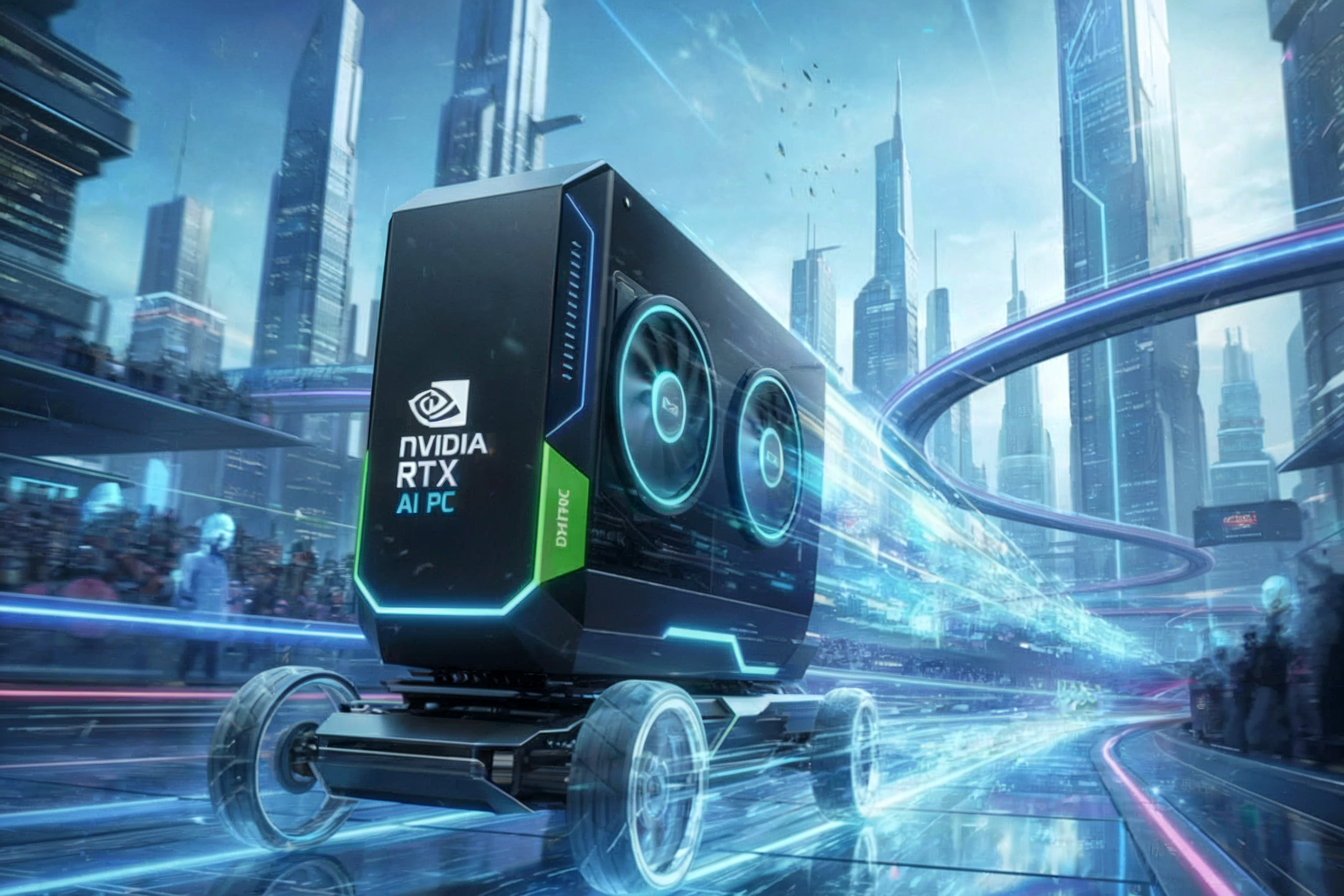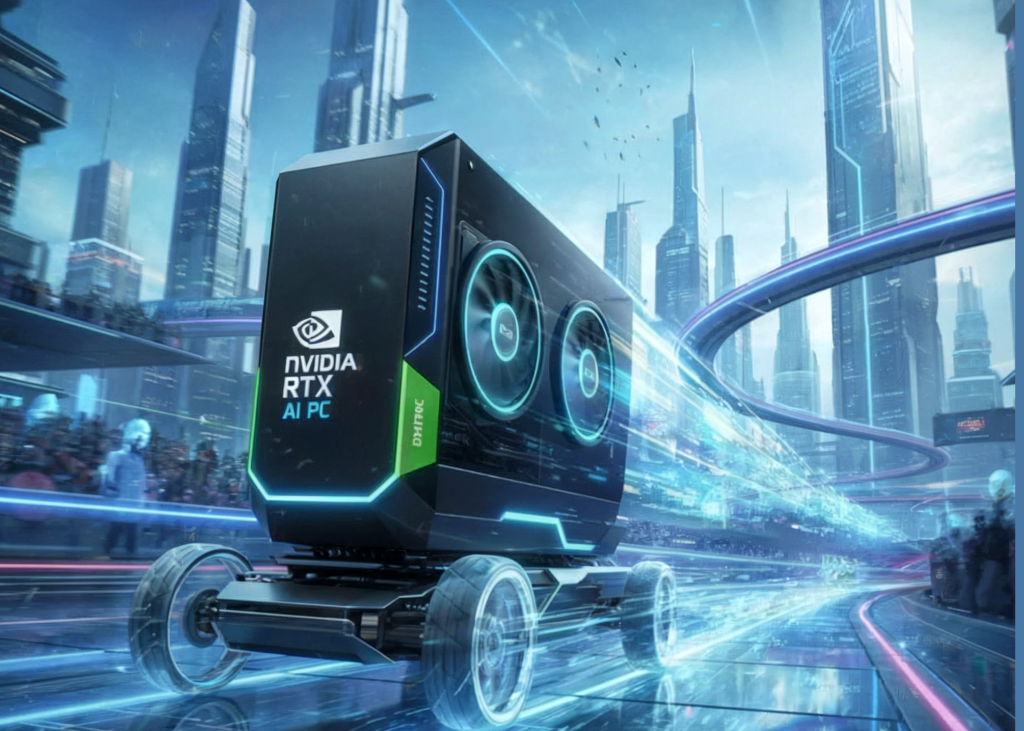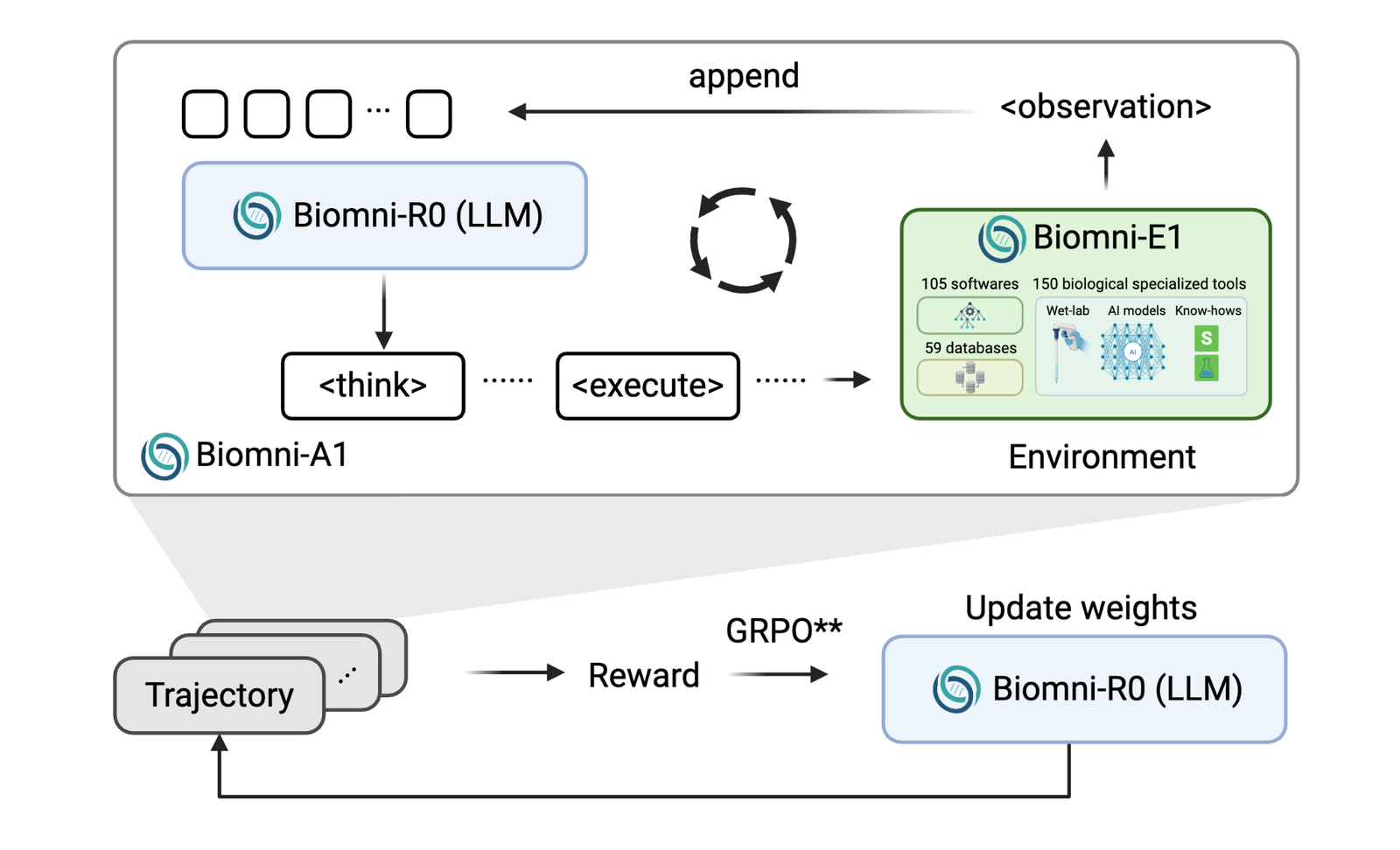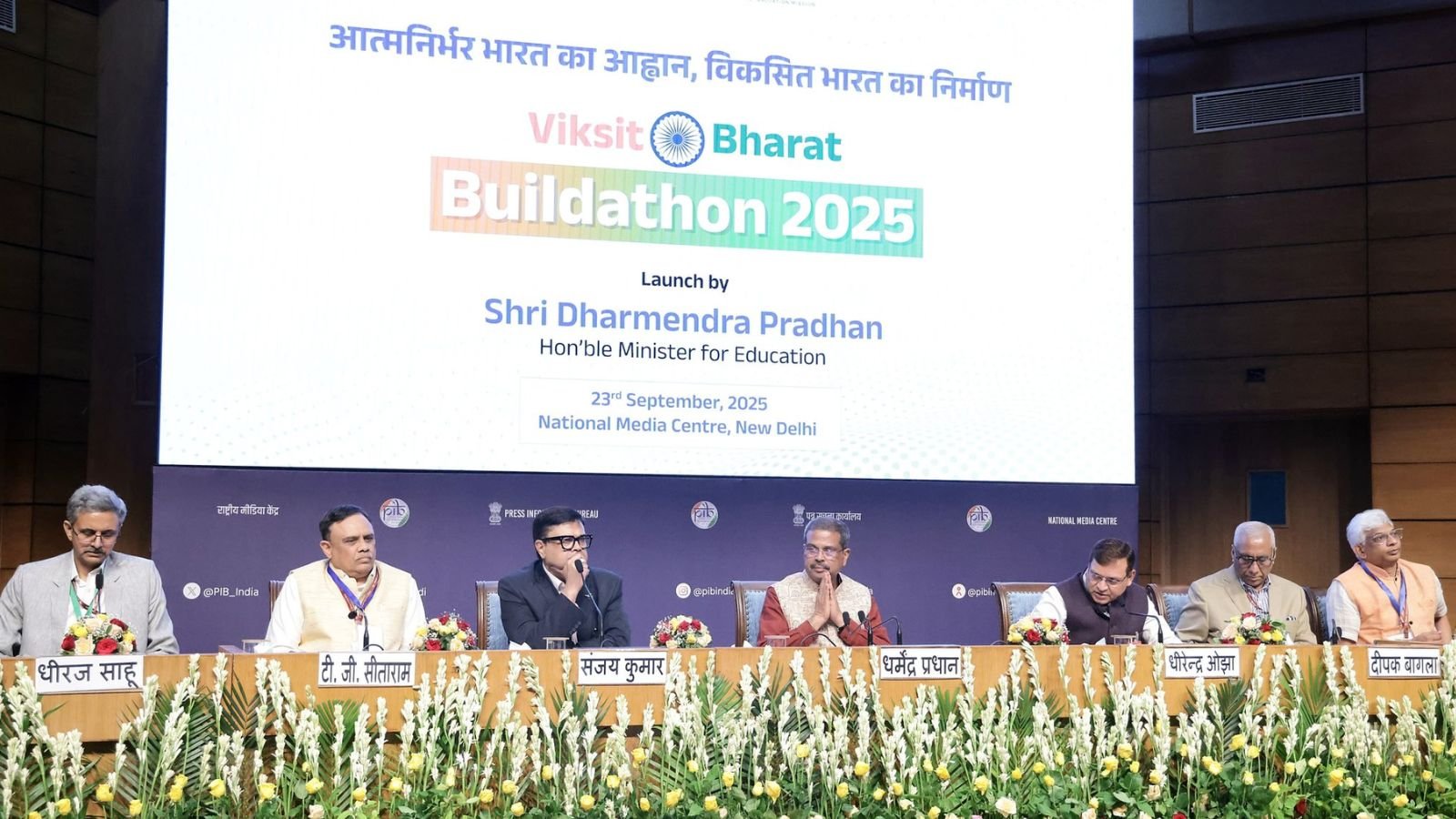The landscape of AI is expanding. Today, many of the most powerful LLMs (large language models) reside primarily in the cloud, offering incredible capabilities but also concerns about privacy and limitations around how many files you can upload or how long they stay loaded. Now, a powerful new paradigm is emerging.
This is the dawn of local, private AI.


Imagine a university student preparing for finals with a semester’s overload of data: dozens of lecture recordings, scanned textbooks, proprietary lab simulations, and folders filled with dozens of handwritten notes. Uploading this massive, copyrighted, and disorganized dataset to the cloud is impractical, and most services would require you to re-upload it for every session. Instead, students are using local LLMs to load all these files and maintain complete control on their laptop.
They prompt the AI: “Analyze my notes on ‘XL1 reactions,’ cross-reference the concept with Professor Dani’s lecture from October 3rd, and explain how it applies to question 5 on the practice exam.”
Seconds later, the AI generates a personalized study guide, highlights the key chemical mechanism from the slides, transcribes the relevant lecture segment, deciphers the student’s handwritten scrawl, and drafts new, targeted practice problems to solidify their understanding.
This switch to local PCs is catalyzed by the release of powerful open models like OpenAI’s new gpt-oss, and supercharged by accelerations provided by NVIDIA RTX AI PCs on LLM frameworks used to run these models locally. A new era of private, instantaneous, and hyper-personalized AI is here.
gpt-oss: the Keys to the Kingdom
OpenAI’s recent launch of gpt-oss is a seismic event for the developer community. It’s a robust 20-billion parameter LLM that is both open-source and, crucially, “open-weight.”
But gpt-oss isn’t just a powerful engine; it’s a meticulously engineered machine with several game-changing features built-in:
● A Specialized Pit Crew (Mixture-of-Experts): The model uses a Mixture-of-Experts (MoE) architecture. Instead of one giant brain doing all the work, it has a team of specialists. For any given task, it intelligently routes the problem to the relevant “experts,” making inference incredibly fast and efficient which is perfect for powering an interactive language-tutor bot, where instant replies are needed to make a practice conversation feel natural and engaging.
● A Tunable Mind (Adjustable Reasoning): The model showcases its thinking with Chain-of-Thought and gives you direct control with adjustable reasoning levels. This allows you to manage the trade-off between speed and depth for any task. For instance, a student writing a term paper could use a “low” setting to quickly summarize a single research article, then switch to “high” to generate a detailed essay outline that thoughtfully synthesizes complex arguments from multiple sources.
● A Marathon Runner’s Memory (Long Context): With a massive 131,000-token context window, it can digest and remember entire technical documents without losing track of the plot. For example, this allows a student to load an entire textbook chapter and all of their lecture notes to prepare for an exam, asking the model to synthesize the key concepts from both sources and generate tailored practice questions.
● Lightweight Power (MXFP4): It is built using MXFP4 quantization. Think of this as building an engine from an advanced, ultra-light alloy. It dramatically reduces the model’s memory footprint, allowing it to deliver high performance. This makes it practical for a computer science student to run a powerful coding assistant directly on their personal laptop in their dorm room, getting help debugging a final project without needing a powerful server or dealing with a slow wifi.
This level of access unlocks superpowers that proprietary cloud models simply can’t match:
● The ‘Air-Gapped’ Advantage (Data Sovereignty): You can analyze and fine-tune LLMs locally using your most sensitive intellectual property without a single byte leaving your secure, air-gapped environment. This is essential for AI data security and compliance (HIPAA/GDPR).
● Forging Specialized AI (Customization): Developers can inject their company’s DNA directly into the model’s brain, teaching it proprietary codebases, specialized industry jargon, or unique creative styles.
● The Zero-Latency Experience (Control): Local deployment provides immediate responsiveness, independent of network connectivity, and offers predictable operational costs.
However, running an engine of this magnitude requires serious computational muscle. To unlock the true potential of gpt-oss, you need hardware built for the job. This model requires at least 16GB of memory to run on local PCs.
The Need for Speed: Why the RTX 50 Series Accelerates Local AI


Benchmarks
When you shift AI processing to your desk, performance isn’t just a metric, it’s the entire experience. It’s the difference between waiting and creating; between a frustrating bottleneck and a seamless thought partner. If you’re waiting for your model to process, you’re losing your creative flow and your analytical edge.
To achieve this seamless experience, the software stack is just as crucial as the hardware. Open-source frameworks like Llama.cpp are essential, acting as the high-performance runtime for these LLMs. Through deep collaboration with NVIDIA, Llama.cpp is heavily optimized for GeForce RTX GPUs for maximum throughput.
The results of this optimization are staggering. Benchmarks utilizing Llama.cpp show NVIDIA’s flagship consumer GPU, the GeForce RTX 5090 , running the gpt-oss-20b model at a blistering 282 tokens per second (tok/s). Tokens are the chunks of text a model processes in a single step, and this metric measures how quickly the AI can generate a response. To put this in perspective, the RTX 5090 significantly outpaces the Mac M3 Ultra (116 tok/s) and AMD’s 7900 XTX (102 tok/s). This performance lead is driven by the dedicated AI hardware, the Tensor Cores, built into the GeForce RTX 5090, specifically engineered to accelerate these demanding AI tasks.
But access isn’t just for developers comfortable with command-line tools. The ecosystem is rapidly evolving to become more user-friendly while leveraging these same NVIDIA optimizations. Applications like LM Studio, which is built on top of Llama.cpp, provide an intuitive interface for running and experimenting with local LLMs. LM Studio makes the process easy and supports advanced techniques like RAG (retrieval-augmented generation).
Ollama is another popular, open-source framework that handles model downloads, environment setup and GPU acceleration automatically, and multi-model management with seamless application integration. NVIDIA has also collaborated with Ollama to optimize its performance, ensuring these accelerations apply to gpt-oss models. Users can interact directly through the new Ollama app or utilize third-party applications such as AnythingLLM, which offers a streamlined, local interface and also includes support for RAG.
The NVIDIA RTX AI Ecosystem: The Force Multiplier
NVIDIA’s advantage isn’t just about raw power; it’s about the robust, optimized software ecosystem acting as a force multiplier for the hardware, making advanced AI possible on local PCs.
The Democratization of Fine-Tuning: Unsloth AI and RTX
Customizing a 20B model has traditionally required extensive data center resources. However RTX GPUs changed that, and software innovations like Unsloth AI are maximizing this potential.
Optimized for NVIDIA architecture, it leverages techniques like LoRA (Low-Rank Adaptation) to drastically reduce memory usage and increase training speed.
Critically, Unsloth is heavily optimized for the new GeForce RTX 50 Series (Blackwell architecture). This synergy means developers can rapidly fine-tune gpt-oss right on their local PC, fundamentally changing the economics and security of training models on a proprietary “IP vault.”
The Future of AI: Local, Personalized, and Powered by RTX
The release of OpenAI’s gpt-oss is a landmark moment, signaling an industry-wide pivot toward transparency and control. But harnessing this power, achieving instantaneous insights, zero-latency creativity, and ironclad security, requires the right platform.
This isn’t just about faster PCs; it’s about a fundamental shift in control and the democratization of AI power. With unmatched performance, and groundbreaking optimization tools like Unsloth AI, NVIDIA RTX AI PCs are essential hardware for this revolution.
Thanks to the NVIDIA AI team for the thought leadership/ Resources for this article. NVIDIA AI team has supported this content/article.




